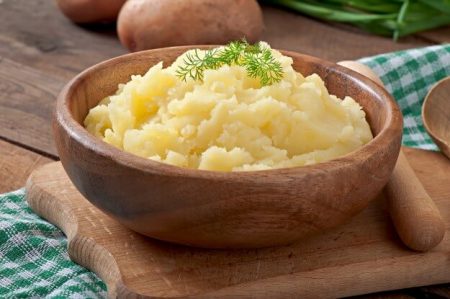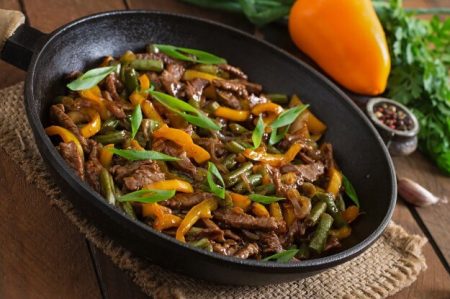Plain hot rice can be a delicious, light meal if you add vegetables and spices. Vegetarians and people on specific diets will love it.
You can add whatever vegetables you have. We suggest taking carrots, green peas, hot peppers, and parsley for this recipe.
It’s always a good idea to taste the rice and vegetables to ensure they are cooked to your liking before serving. Enjoy your vegetable rice dish!
Directions
0/0 steps made- First, boil rice in salted water for 20-25 minutes. After removing from the stove, drain off excess water, cover, and let it brew in a saucepan.
- Then peel and boil whole small carrots. Use fresh green peas or frozen. Cut hot peppers into rings, removing the center and seeds.
- Next, lightly fry hot peppers, green peas, and boiled carrots in olive oil for 5-10 minutes.
- Finally, let the vegetables cool slightly and mix with the rice. Serve with chopped fresh parsley leaves.
Cooking Time
The cooking time for rice typically ranges from 15 to 25 minutes, depending on the type of rice and the specific brand. Follow the instructions on the rice package to determine the appropriate cooking time.
Boiling small carrots will usually take about 8 to 10 minutes. You can test their doneness by piercing them with a fork; they should be tender but not overly soft.
The frying process for the hot rice can take approximately 5 to 10 minutes. Heat a pan with a small amount of olive oil and sauté the hot peppers and green peas until they are slightly tender.
Benefits of Hot Rice with Vegetables
The addition of carrots, green peas, and hot peppers provides a wide range of essential vitamins and minerals. Carrots are rich in beta-carotene, which is converted to vitamin A in the body.
Green peas are a good source of fiber, protein, and various vitamins, like vitamin K and folate. Hot peppers contain capsaicin, which may boost metabolism.
Both rice and vegetables in this recipe contribute to the overall fiber content. Fiber aids digestion, helps maintain a healthy gut.
The recipe encourages you to use whatever vegetables you have on hand. As a result, this variety ensures you get a diverse range of nutrients from different vegetables.
Finally, the use of olive oil for lightly frying the vegetables adds healthy monounsaturated fats.
Video by Healthline
Risks of Hot Rice with Vegetables
For example, hot rice is a carbohydrate-rich food, and if consumed in large quantities without balancing it with other nutrients. This can be a concern for individuals with diabetes or those trying to manage their blood sugar levels.
If the rice is cooked in heavily salted water or additional salt is added during preparation, the dish may become high in sodium. Excessive sodium intake can contribute to hypertension (high blood pressure).
Also, this recipe includes common allergenic ingredients such as carrots and peas. Individuals with specific food allergies.
While this recipe may suit many people, it might not be suitable for individuals with specific dietary requirements.
How to Make this Recipe Healthier
Choose whole grain or brown rice instead of white rice to increase fiber content and lower the glycemic index.
So, be mindful of the amount of salt used during cooking. Opt for herbs and spices to enhance the flavor instead.
And use minimal oil for frying or consider steaming the vegetables for a lower-fat option.
Overall, customize the recipe to accommodate individual dietary needs and allergies.
Serving Variation
However, while the original recipe is vegetarian, you can add some protein sources to make it a more substantial and balanced meal. Consider adding cooked and diced chicken, tofu, shrimp, or sliced boiled eggs.
In addition to parsley, you can include other fresh herbs like cilantro, mint, or basil in the dish.
Drizzle a flavorful sauce or dressing over the vegetable rice to give it a burst of taste. A simple vinaigrette, soy-based sauce, or a tahini dressing would be delightful choices.
Remember that these variations are entirely customizable, and you can mix and match according to your taste preferences and dietary requirements. Be creative and experiment with different combinations to discover your favorite way to enjoy the vegetable rice recipe!





Recent comments